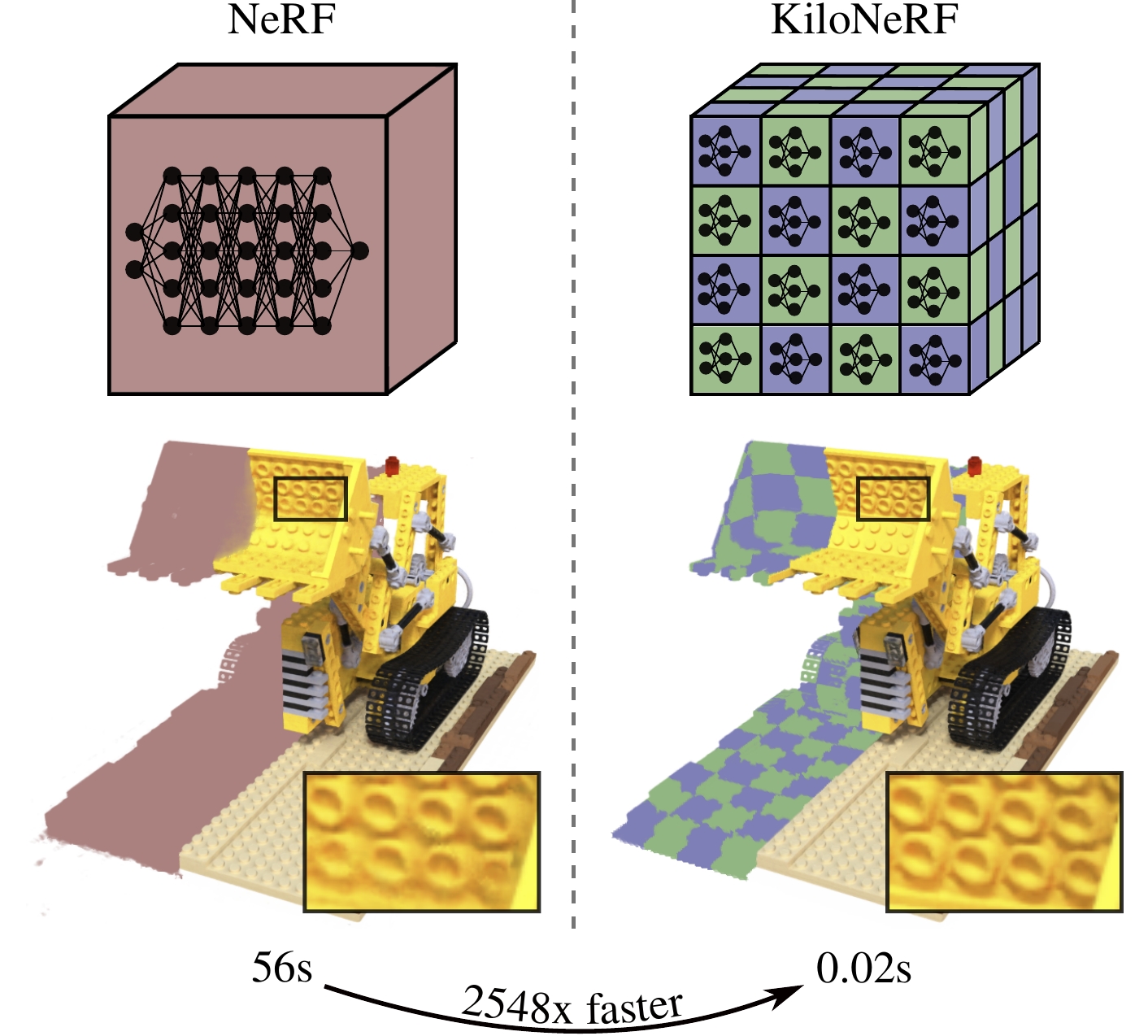KiloNeRF
Speeding up Neural Radiance Fields with Thousands of Tiny MLPs

Abstract
NeRF synthesizes novel views of a scene with unprecedented quality by fitting a neural radiance field to RGB images. However, NeRF requires querying a deep Multi-Layer Perceptron (MLP) millions of times, leading to slow rendering times, even on modern GPUs. In this paper, we demonstrate that real-time rendering is possible by utilizing thousands of tiny MLPs instead of one single large MLP. In our setting, each individual MLP only needs to represent parts of the scene, thus smaller and faster-to-evaluate MLPs can be used. By combining this divide-and-conquer strategy with further optimizations, rendering is accelerated by three orders of magnitude compared to the original NeRF model without incurring high storage costs. Further, using teacher-student distillation for training, we show that this speed-up can be achieved without sacrificing visual quality.
TL;DR: Real-time rendering of NeRF by representing the scene as many independent MLPs arranged on a voxel grid.
Video
Results
The following videos were rendered in real-time with the interactive viewer provided in our code release.
Citation
If you want to cite our work, please use:
@INPROCEEDINGS{Reiser2021ICCV,
author = {Christian Reiser and Songyou Peng and Yiyi Liao and Andreas Geiger},
title = {KiloNeRF: Speeding up Neural Radiance Fields with Thousands of Tiny MLPs},
booktitle = {International Conference on Computer Vision (ICCV)},
year = {2021}
}